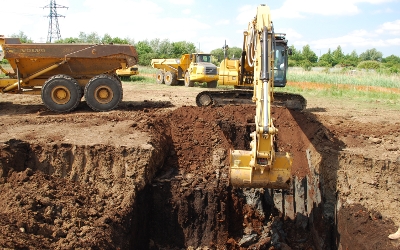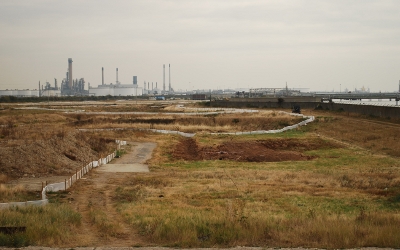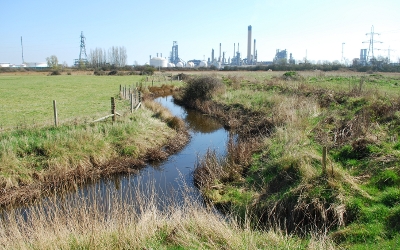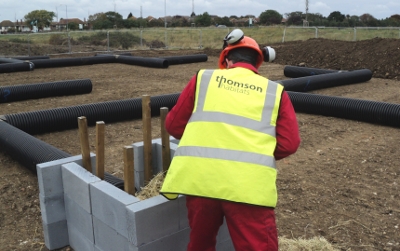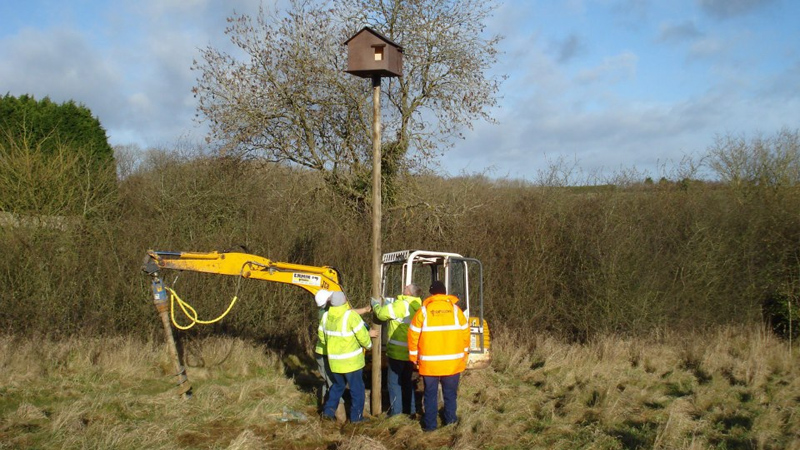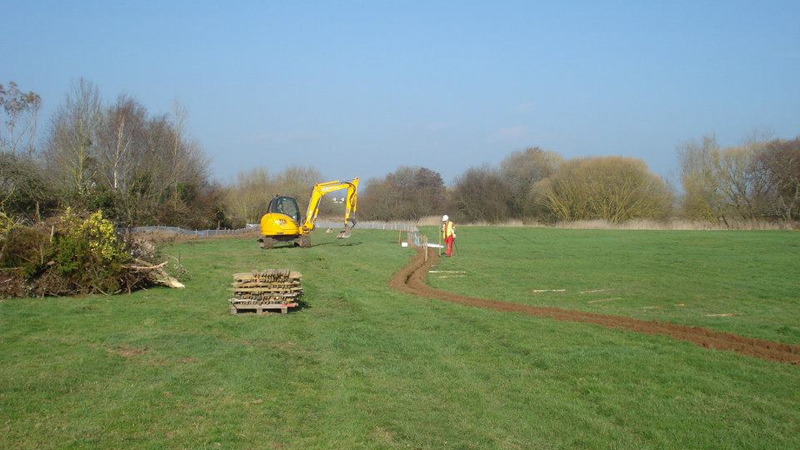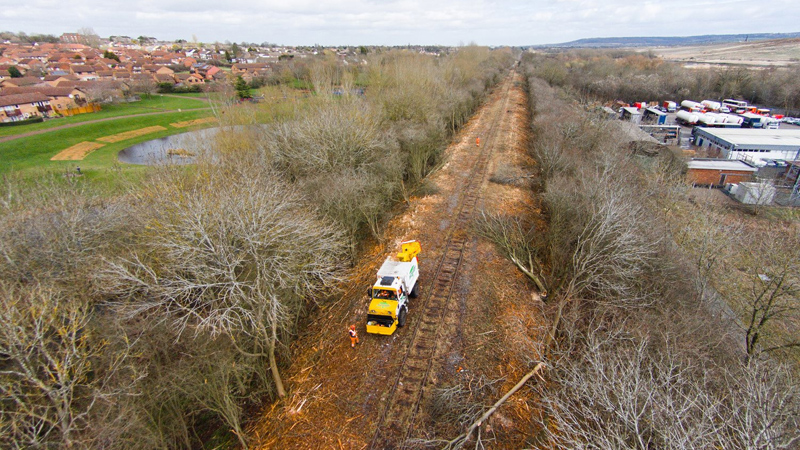Address
Compass House, Priestley Road
Surrey Research Park
Surrey Research Park
Guildford
Surrey
South East England
GU2 7AG
UK
About Thomson Habitats
What we do
Thomson Habitats carries out the practical side of wildlife mitigation projects, including habitat creation and restoration, and environmental mitigation work.
Along with our sister company Thomson Ecology, who specialize in both terrestrial and marine ecology, we offer a total solution to ecological issues, by means of environmental management on brownfield, greenfield and marine sites.
Our clients include major developers, engineers and ecology consultancies, utilities companies, planners, landscape architects and local and national government.
Habitat creation
We design, create and restore habitats for wildlife on both brownfield and rural sites for a wide range of private and public sector clients.
Our habitat creation projects have included: artificial badger setts, water voles ditches, bird and bat boxes, herptile hibernacula, ponds, wetland habitat areas, mixed habitat over extensive areas, grasslands and meadows.
We also carry out countryside management and soft landscaping including tree and shrub planting. We can rely on our colleagues in Thomson Ecology for ecological advice that is up to date and practical.
Contracting
We undertake practical work to turn ecological plans into practice. We support ecologists with protected species trapping and moving.
We provide all sorts of fencing for collecting and managing wildlife (including reptile fencing, newt fencing, water vole fencing and stock fencing amongst others).
We identify and treat invasive plants and species, including Japanese knotweed.
We have a dedicated team of arboriculturists who can carry out condition monitoring and surveys as well as practical tree management works.
Our teams have worked with a wide range of clients all over the UK, from public agencies to individual landowners, local and national government, developers, contractors and consultancies.
Mitigation
When development works adversely impact protected species and their habitats, measures can be taken to mitigate damage.
We carry out a range of practical services which help mitigate the impact that development works can have on flora and fauna. As well as helping in trapping and translocation, we create areas that provide habitat for a wide range of scarce and protected mammals, birds, reptiles, amphibians and scarce plants.
Thomson Habitats carries out the practical side of wildlife mitigation projects, including habitat creation and restoration, and environmental mitigation work.
Along with our sister company Thomson Ecology, who specialize in both terrestrial and marine ecology, we offer a total solution to ecological issues, by means of environmental management on brownfield, greenfield and marine sites.
Our clients include major developers, engineers and ecology consultancies, utilities companies, planners, landscape architects and local and national government.
Habitat creation
We design, create and restore habitats for wildlife on both brownfield and rural sites for a wide range of private and public sector clients.
Our habitat creation projects have included: artificial badger setts, water voles ditches, bird and bat boxes, herptile hibernacula, ponds, wetland habitat areas, mixed habitat over extensive areas, grasslands and meadows.
We also carry out countryside management and soft landscaping including tree and shrub planting. We can rely on our colleagues in Thomson Ecology for ecological advice that is up to date and practical.
Contracting
We undertake practical work to turn ecological plans into practice. We support ecologists with protected species trapping and moving.
We provide all sorts of fencing for collecting and managing wildlife (including reptile fencing, newt fencing, water vole fencing and stock fencing amongst others).
We identify and treat invasive plants and species, including Japanese knotweed.
We have a dedicated team of arboriculturists who can carry out condition monitoring and surveys as well as practical tree management works.
Our teams have worked with a wide range of clients all over the UK, from public agencies to individual landowners, local and national government, developers, contractors and consultancies.
Mitigation
When development works adversely impact protected species and their habitats, measures can be taken to mitigate damage.
We carry out a range of practical services which help mitigate the impact that development works can have on flora and fauna. As well as helping in trapping and translocation, we create areas that provide habitat for a wide range of scarce and protected mammals, birds, reptiles, amphibians and scarce plants.
Gallery
News
Thomson Habitats has been working with our client, a Costain-Galliford Try Joint Venture, on the M1 J19 to J16 Smart Motorway in Northamptonshire. The smart motorway programme is a £65m scheme and is part of Highways England’s Collaborative Delivery Framework. The works are focusing on increasing capacity on the M1 between J16 and 19 and will allow traffic to use the hard shoulder.
Thomson Habitats has been working closely with sister company, Thomson Ecology, and Costain-Galliford Try since August to deliver the great crested newt (GCN) mitigation works.
Thomson Habitats has been working closely with sister company, Thomson Ecology, and Costain-Galliford Try since August to deliver the great crested newt (GCN) mitigation works.
Thomson Habitats worked with client, Team Van Oord, as part of their Water and Environment Management (WEM) framework, to facilitate Phase 1 of the Exeter Flood Defence Scheme.
The £30 million project aims to reduce flood risk to 3000 homes and businesses in Exeter.
Phase 1 of the works will involve our client deepening the existing flood relief channel, lowering the spill weir at the top of a another flood relief channel, and removing a check weir at the bottom of the channel. The works will increase the flow capacity of the channel.
Thomson Habitats was commissioned to undertake the soft landscaping and habitat enhancement works.
The £30 million project aims to reduce flood risk to 3000 homes and businesses in Exeter.
Phase 1 of the works will involve our client deepening the existing flood relief channel, lowering the spill weir at the top of a another flood relief channel, and removing a check weir at the bottom of the channel. The works will increase the flow capacity of the channel.
Thomson Habitats was commissioned to undertake the soft landscaping and habitat enhancement works.
Railway Industry Supplier Qualification Scheme (RISQS) has awarded Thomson Habitats five stars - the maximum rating, for the latest supplier audit. This means that there were no non-compliances.
RISQS is the supplier pre-qualification service used by buyers of all products and services throughout the British rail industry, and companies who are registered with the scheme are able to check other companies’ competencies.
The annual audit covers how the company manages health, safety and environment, including management systems, policies and procedures, accident and emergency reporting, PPE, working hours, and health and safety staff competencies and qualifications.
RISQS is the supplier pre-qualification service used by buyers of all products and services throughout the British rail industry, and companies who are registered with the scheme are able to check other companies’ competencies.
The annual audit covers how the company manages health, safety and environment, including management systems, policies and procedures, accident and emergency reporting, PPE, working hours, and health and safety staff competencies and qualifications.
Thomson Habitats has been working with client, Team Van Oord, on the first phase of a flood defence scheme in Exeter.
The £30m scheme is designed to protect 3,000 homes and businesses throughout the area.
Following the initial involvement with the enabling works at the beginning of the scheme, Thomson Habitats has now been contracted to undertake soft landscaping works to follow the completion of the engineering phase of the project.
The £30m scheme is designed to protect 3,000 homes and businesses throughout the area.
Following the initial involvement with the enabling works at the beginning of the scheme, Thomson Habitats has now been contracted to undertake soft landscaping works to follow the completion of the engineering phase of the project.
 Scotland
Scotland UK
UK Ireland
Ireland London
London






